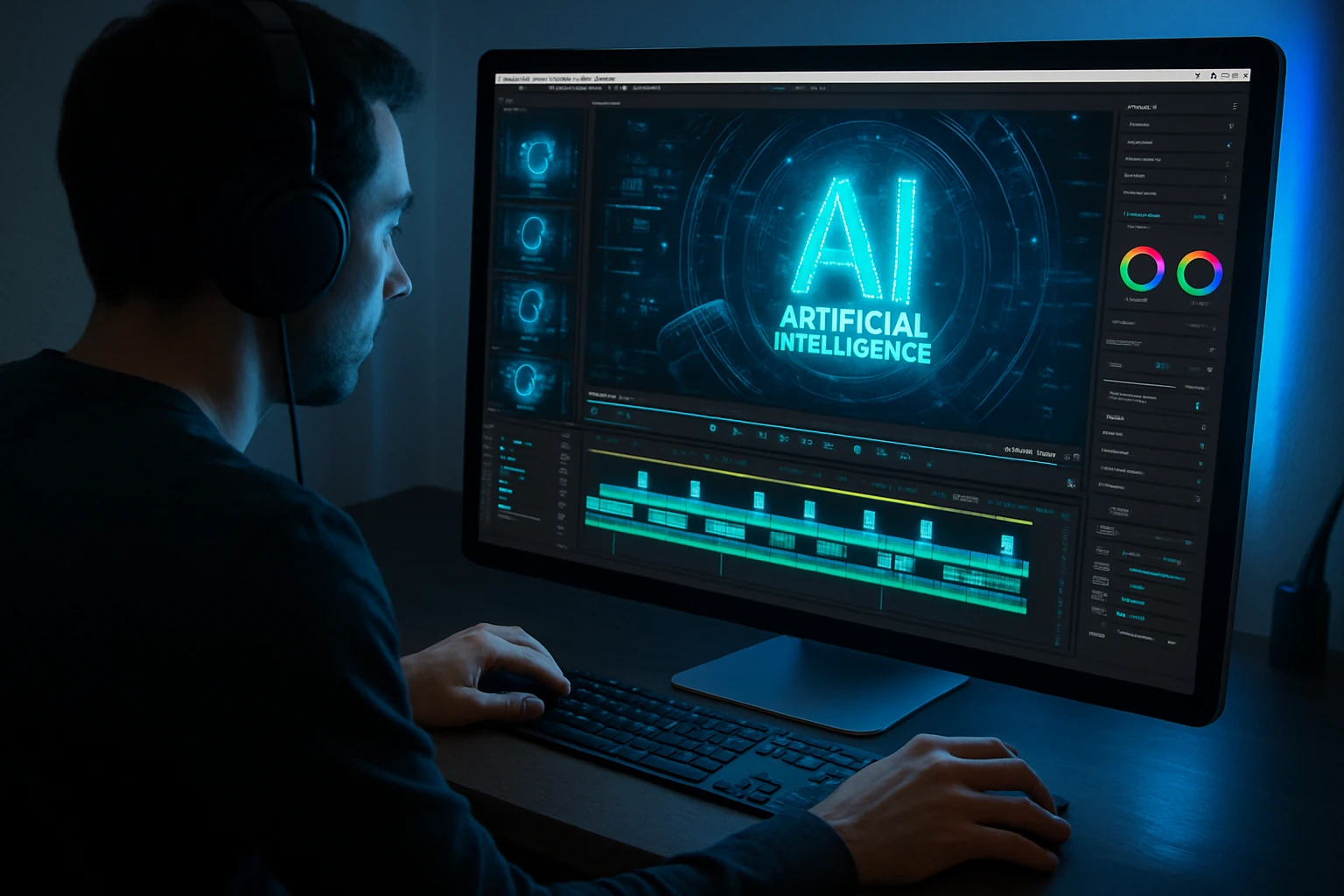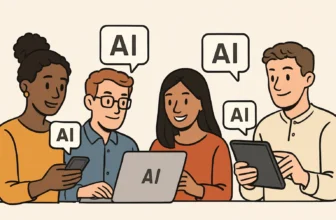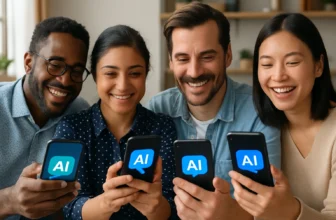
Is AI the New Secret Sauce in Video Editing?
What if I told you that some AI video tools can now cut, trim, add transitions, captions, and even music — all in under five minutes? Sounds like a wishful dream, right? But it’s happening. Like, right now.
Let’s be real for a second. If you’ve ever stared at your editing timeline at 2AM wondering how you only managed to finish *two minutes* of content in the last three hours… you are not alone. I’ve been there. We all have. Editing can be a creative high and a total time-suck at the same time. You get lost in endless choices — cuts, color grading, captions, oh my!
But here’s the thing: we’re not editing in the dark ages anymore. Welcome to the era of AI-powered video editing software, where tech is finally catching up with the needs of modern-day creators and marketers. Whether you’re crafting YouTube videos, social ads, or TikToks on the fly — these tools are changing the game.
Here’s how AI video tools are flipping the script:
- Bye, manual trimming: Tools like Descript let you edit by deleting words from a transcript — it’s like editing a Word doc instead of a timeline!
- Instant mood vibes: Platforms like Pictory or Runway can auto-pair visuals and BGM to your script using AI — think drag, drop, done.
- Auto-subtitling (with flair): Remember debating font size for captions? AI’s got you covered. Captions are generated in seconds and auto-styled to fit your brand.
I tried it myself last month: I needed a quick promo reel for a webinar and instead of battling Adobe Premiere, I used Wisecut. Uploaded my script, threw in some raw footage, and poof – a tight 90-second edit with music and captions. Not perfect, but 90% of the way there in 10 minutes. I actually laughed out loud at how easy it was. (And I’m kind of a control freak, so handing the reins to AI was huge!)
Here’s what I’ve learned: You don’t have to choose between speed and quality anymore. AI video editing tools are built to help you do more with less – less time, less burnout, less staring at blinking cursors.
So what’s the catch?
Honestly? Just knowing which tool fits your flow. Some are perfect for quick repurposing of long-form content, others create entire videos from scratch in minutes. It’s about experimenting and finding your sweet spot. Spoiler: once you do, you may never look back.
So, whether you’re a solo content creator juggling all the hats or a marketer on tight deadlines, embracing AI video tools isn’t just smart—it’s your superpower. Ready to create, publish, and chill a little more? Yeah, same here. Let’s dive in and see how this magic actually works.
The Problem with Traditional Video Editing
Did you know that editing just one minute of polished video can take up to *an hour* of manual work? Yep, you read that right. One. Single. Minute. If that stat makes your eyelid twitch a little, you’re not alone.
Let’s be real—traditional video editing can feel like trying to hand-carve a marble statue with a butter knife. Between importing footage, arranging timelines, fine-tuning audio, color grading, adding captions…and then fixing the captions…it’s a whole *thing*. And that’s *before* your third coffee kicks in.
If you’ve ever stared at your editing software wondering, “Why does this feel like a second job?”—it’s because, for many of us, it is. Unless you love nested sequences and keyframes (bless you if you do), editing can be overwhelming, time-consuming, and, honestly, kind of gatekeep-y. It demands both creative and technical brain power, which isn’t always fair when all you want is to make some engaging content, not learn software like you’re prepping for a NASA mission.
Enter: AI Video Tools (Your New Editing BFF)
Here’s the good news—AI video tools are swooping in like your favorite superhero in edit-mode. We’re talking smart features like:
- Auto-transcription and captions? Done in seconds.
- Background noise removal? Click a button.
- Finding the best clips from a 2-hour interview? AI can surface the juiciest bits in minutes.
Let me tell you about my friend Jamie—she used to dread editing her weekly YouTube videos. Four hours of slog for a 10-minute final product. She tried out an AI-powered video tool (Descript, if you’re curious), and suddenly she was editing her videos like a Google Doc. Cut here, move there, done. Now she’s batch-editing content in half the time—and spending more evenings binge-watching K-dramas instead.
Or my own quick win: I was editing a webinar clip for Instagram, and instead of scrubbing through footage manually, I used AI to generate a highlight reel. It picked out applause moments, emotional tones, and shared insights better than I ever could with just eyeballs. The result? A punchy, polished one-minute clip that got 2x more engagement than the manually edited one from the previous week.
Find What’s Draining Your Time
If you’re curious whether AI editing tools could save your sanity (and your calendar), start by identifying your pain points. Ask yourself:
- What part of editing do I avoid the most?
- Where do I lose the most time—cutting clips, fixing audio, adding text?
- What’s slowing down my content creation consistently?
Once you know what’s holding you back, you can look for AI tools that target exactly that problem. It’s like hiring a tiny genius intern who doesn’t sleep and always knows where you left that missing transition effect.
Ready to Let Go of the Grind?
I get it—there’s a certain pride in doing things the hard way. But if you’re spending hours on tasks that *don’t spark joy*, it might be time to upgrade your toolkit. AI isn’t here to pour glitter on mediocre content. It’s here to give you your time and creative energy back so you can focus on storytelling, not splicing timelines.
Say goodbye to the late-night edit marathons and hello to slick, speedy workflows. Sound like magic? It kind of is… But it’s also just really smart tech.
How AI Tools Simplify the Video Editing Process
Did you know that the average video editor spends up to 40% of their time just organizing and clipping footage? Not even adding effects or music—just the grunt work. Wild, right? If you’ve ever sat in front of a mountain of raw footage, painstakingly chopping it up one frame at a time, you know the “why-am-I-even-doing-this” fatigue I’m talking about.
I’ve been there, agonizing over whether a cut one second earlier would feel “snappier,” or trying to find that one great reaction shot buried in two hours of interviews. Traditional editing is powerful—don’t get me wrong—but it can also be painfully slow, especially when content has to go from “recorded” to “published” yesterday.
Let’s Talk About What AI Brings to the (Editing) Table
This is where AI tools jump in like a superhero with coffee in one hand and a timeline shortcut in the other. These tools aren’t just fancy filters—they’re practical, time-saving geniuses. Here’s what AI is doing under the hood:
- Automatic scene detection: AI can analyze your entire raw clip and break it up into logical segments based on visual or audio cues—no more manual scrubbing. Tools like Runway and Descript do this beautifully.
- Instant voiceovers and dub generation: Apps like Synthesia let you generate lifelike voiceovers in multiple languages. You type, it talks. Magic.
- Auto-captions and subtitles: Not only does AI generate them quickly, but it also gets surprising accuracy—plus built-in styling options that save huge time.
- Music and sound sync: AI tools like Adobe’s Sensei can actually find the beat of your soundtrack and sync footage accordingly. Hello, rhythm.
How You Can Start Using AI in Your Editing Flow—Right Now
Okay, so this stuff sounds great, but how do you actually get started without reinventing your whole editing process? Here’s what I usually recommend:
- Step 1: Try Descript—if you’re doing talking-head or podcast videos, it’s a dream. Edit your video like you’re editing a doc. Really.
- Step 2: Use Runway’s scene detection tools to preprocess your raw footage. You upload, it organizes. Done.
- Step 3: Integrate AI voiceover tools for social media snippets. Try Lumen5 for automatic text-to-video content with voiceovers—perfect for repurposing blog posts.
Start small. Tweak how you process just *one* video and see what kind of time it saves. I had a client who shaved their editing time from 8 hours to 2 just by leaning on scene detection and auto-captions. Seriously.
So, Why Keep Poking Around a Timeline When You Can Let AI Assist?
The best part? These tools don’t take away your creativity—they give it a boost. Instead of spending endless hours stitching clips together, you get to focus on the juicy stuff: storytelling, pacing, impact. You know, the parts that people actually notice.
AI video tools aren’t replacing editors. They’re empowering them. Think of them as your super assistant—faster than a triple-shot espresso and way better at catching scene changes. If you’re not already using them… it might be time to plug in.
Action takeaway: Choose one AI tool this week and test it on a new project. You might just reclaim your weekend. 😉
Game-Changing AI Tools for Your Arsenal
Did you know that over 80% of marketers say video has helped them directly boost sales? Yep, not just clicks or likes — actual revenue. Wild, right? But here’s the problem: not all of us have the time, budget, or team to shoot and edit Oscar-worthy content every week. Trust me, I’ve been there… staring at footage at 2 AM, trying to decide if that transition was “cinematic” or just “trying too hard.”
That’s where AI video editing tools swoop in wearing a digital superhero cape. They’re not just here to lighten the load — they’re transforming how we create, edit, and share video faster than you can say “auto-caption.”
Top AI Video Tools You’ll Want in Your Lineup
There’s a growing list of AI tools out there, but a few have seriously stood out for their smarts, speed, and just how dang helpful they are.
- Descript: Imagine editing a video like you’re using a Word doc. That’s Descript. It transcribes your audio/video, and then you can cut video just by deleting words. It even removes filler words, awkward pauses, and “ums” like a little editing wizard. Pricing starts at $12/month and goes up depending on features.
- Runway: This AI tool feels like something from the future. Think real-time green screen, background removal, motion tracking, even creating video from text prompts (yup, for real!). Creators rave about its ease and range. Free tier available; Pro starts at $12/month.
- Pictory: Got blog content gathering dust? Pictory can turn text or long-form video into branded, short-form video content. Perfect for repurposing — and fast. Plans start around $19/month, but the time you save? Priceless.
- Wisecut: One YouTuber I follow swears by this one. It auto-edits videos by detecting speech, slicing up awkward silences, even adding background music. It’s like hiring an assistant editor that doesn’t sleep. Free basic version, and Premium is $10/month.
Real Talk From Real Creators
Sam, a content strategist I met at a recent webinar, told me she saved over 20 hours a month after switching to Descript for editing her weekly video podcast. “It’s like I finally have time to breathe,” she said. Relatable, right?
And Jenna, a solo course creator, used Pictory to transform her old webinars into slick IG Reels. She saw a 400% spike in engagement. “I wasn’t even advertising — people just started watching,” she told me, beaming.
These tools aren’t just about time savings. They’re helping real humans grow businesses faster, smarter, and with way less burnout.
Which Tool Is Right for You?
Here’s how I think about it — pick your tool based on your bottleneck:
- If you hate editing: Try Descript or Wisecut to speed it up dramatically.
- Need to repurpose content? Pictory is your new BFF.
- Want to create artsy, scroll-stopping content? Runway will blow your mind.
Also, test the free versions. Most of them have decent trial tiers so you can test-run before committing your budget.
Embrace the AI Advantage
Don’t think of AI tools as replacing creativity — they’re here to amplify yours. With the right setup, you’ll finally move from endless editing to actually focusing on what you do best: telling stories, reaching your audience, and growing your brand.
So take a breath, grab a coffee, and give one of these game-changers a try. You might just wonder how you ever edited without them.
What the Future Holds for AI in Video Editing
Did you know that by some estimates, AI-generated content will make up over 90% of online content in the near future? Yep, that includes our beloved videos too — from YouTube intros to TikTok transitions, and even full-on documentaries. Wild, right?
If you’re a content creator or video editor, you’re probably feeling a mix of excitement and “uh-oh, am I getting replaced?” vibes. Totally valid. I remember the first time I played around with an AI tool that could auto-cut the boring bits from my vlogs — within seconds. I was amazed… and a little terrified. But let’s take a breath together and look at what’s really coming down the pipeline.
The AI-Edited Future Isn’t About Replacing — It’s About Empowering
Here’s the thing: AI is growing rapidly — but it’s not here to steal your editor’s chair. It’s here to make your job easier, faster, smarter. Picture this:
- AI that suggests the perfect B-roll based on your script.
- Automatic video translations and subtitles in a dozen languages.
- Real-time editing assistants that can mimic your editing style (yes, your style!).
Basically, AI is evolving from a simple tool into a creative partner. It’s like having a nitpicky, detail-obsessed assistant who never sleeps. And who doesn’t want that, honestly?
But What About Jobs?
This is the elephant in the timeline, right? As AI gets better, what happens to jobs in editing?
Well, here’s some good news: human creativity still wins. AI can help shape content, but it’s *your* storytelling instincts, *your* sense of timing, and *your* emotional intuition that connect with audiences. AI might know how to crop a scene efficiently — but it doesn’t feel the goosebumps when a moment is just right. You do.
The future of editing will lean more toward roles like:
- Creative directors who guide the vision while AI handles the grunt work
- AI editors who specialize in using and training AI tools efficiently
- Content strategists who merge storytelling with smart, automated systems
So rather than disappearing, the editing job market is going to evolve — and that means opportunity, not extinction.
Trends and Tools to Watch
Get ready for even more jaw-dropping AI features. We’re talking:
- Voice synthesis that re-records lines with the actor’s voice — without a mic
- Emotion detection that knows which scenes to highlight for max impact
- Hyper-personalized video ads created in seconds for specific users
I recently tested an AI “co-pilot” tool that edited hours of footage into a 30-second highlight reel with dynamic cuts, music sync, and intro/outro titles. It honestly gave me goosebumps. (And also saved me four hours, which is basically magic.)
Stay Curious, Stay Adaptive
Look, the landscape is shifting — fast. But you don’t need to outrun AI. You just need to run *with* it. Get curious. Play with tools. Watch how the trends evolve. And ask yourself, “How can I use this tech to express my voice even better?”
This is your opportunity to evolve from editor to visionary. Adaptation is the new superpower — and the creators who embrace new tools will be the ones shaping the new digital storytelling frontier.
So don’t fear the future. Learn it. Lean into it. And create something only *you* could dream up — with a little help from your AI sidekick.
Embrace AI: Your Partner in Creation
Did you know that over 500 hours of video are uploaded to YouTube every minute? Yep. Every *minute*. That’s a jaw-dropping amount of content, and honestly, it can feel like you’re just shouting into the void.
If you’ve ever sat there, hunched over your laptop, staring at the timeline trying to sync your voiceover with your footage—or worse, trying to cut out 237 awkward “ums” from your latest talking-head video—you know how exhausting editing can get. I’ve been there. There were days I spent more time editing than filming, and I’d still feel like the final cut lacked that polished punch.
But here’s the good news: AI video tools are changing the game. Completely flipping the script, actually.
So, what’s the real magic here?
AI tools aren’t just a “nice-to-have” anymore—they’re a total creative sidekick. They handle the techy time-suck stuff, so you can focus on being, well, *you*. The ideas. The flair. The voice your audience came for in the first place.
- Speed up your workflow: Tools like Descript or Runway can remove background noise, trim silences, even edit based on your script—automatically. That 4-hour edit suddenly takes 40 minutes.
- Add that ‘wow’ factor: Want dynamic captions, pop-up animations, or even b-roll suggestion? AI-driven platforms can help you do what used to take a team of editors.
- Sound and look better (without faking it): From color correction to voice enhancement, AI helps tidy things up while keeping your authentic vibe intact.
I recently helped a friend—a food blogger—start using an AI-powered editor. She was spending two full days a week editing cooking tutorials. After switching things up with AI, she cut that down by 70%. Now she’s focusing on recipe creation, partnering with brands, and finally catching up on sleep (win-win-win).
Take the Next Step (Your Future Audience Will Thank You)
Here’s the thing: it’s not about replacing your creativity. It’s about amplifying it. Whether you’re running a YouTube channel, crafting Instagram reels, or building marketing campaigns—AI tools can help you show up consistently, professionally, and (most importantly) without burnout.
So, test one tool. Play around. Mess up a little. You don’t have to master it all overnight—but the sooner you start, the sooner you’ll wonder how you ever lived without it.
Your next level of content isn’t months away. It’s one click, one playful edit, one AI tool away. And your audience? They’re gonna love what you create next.












